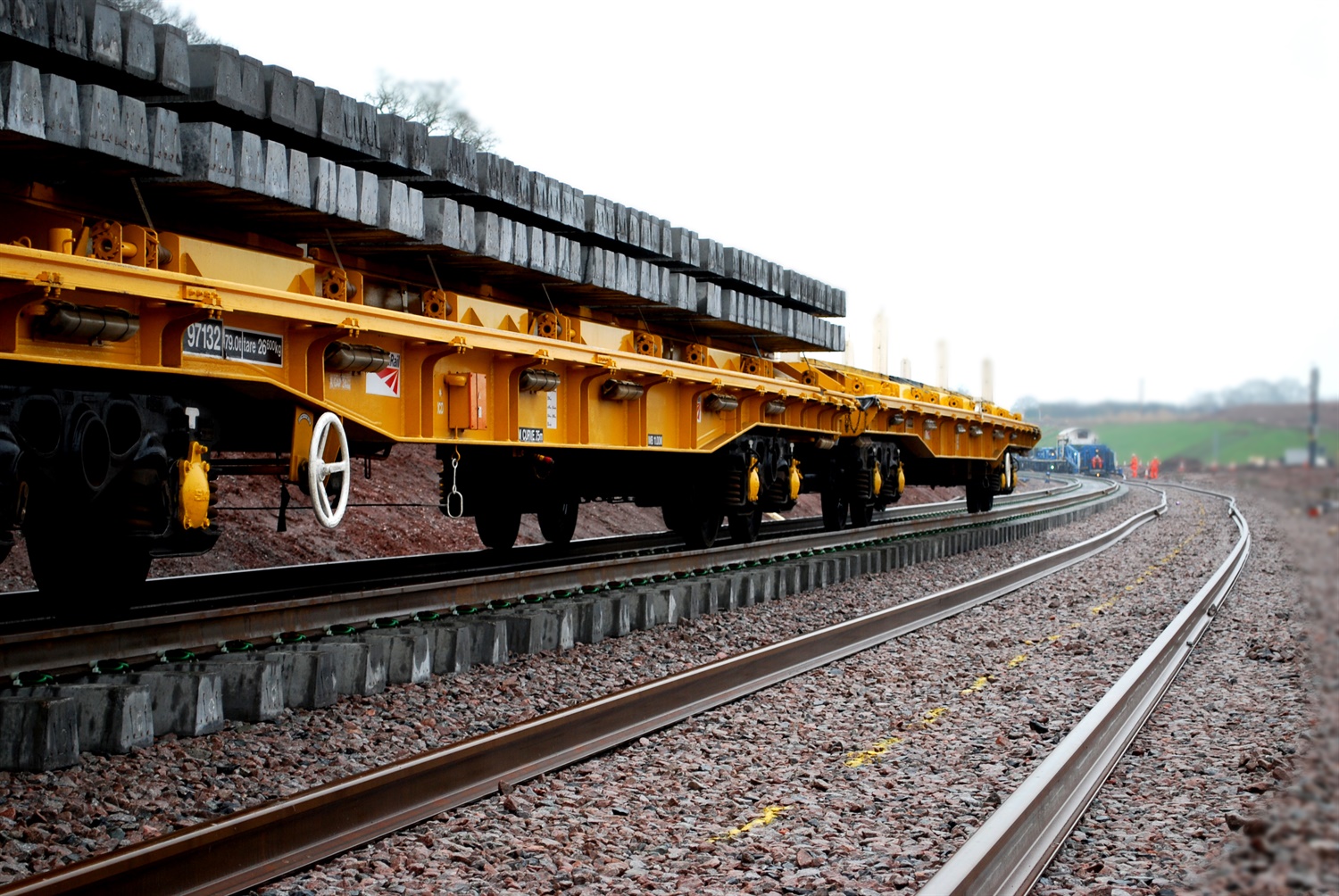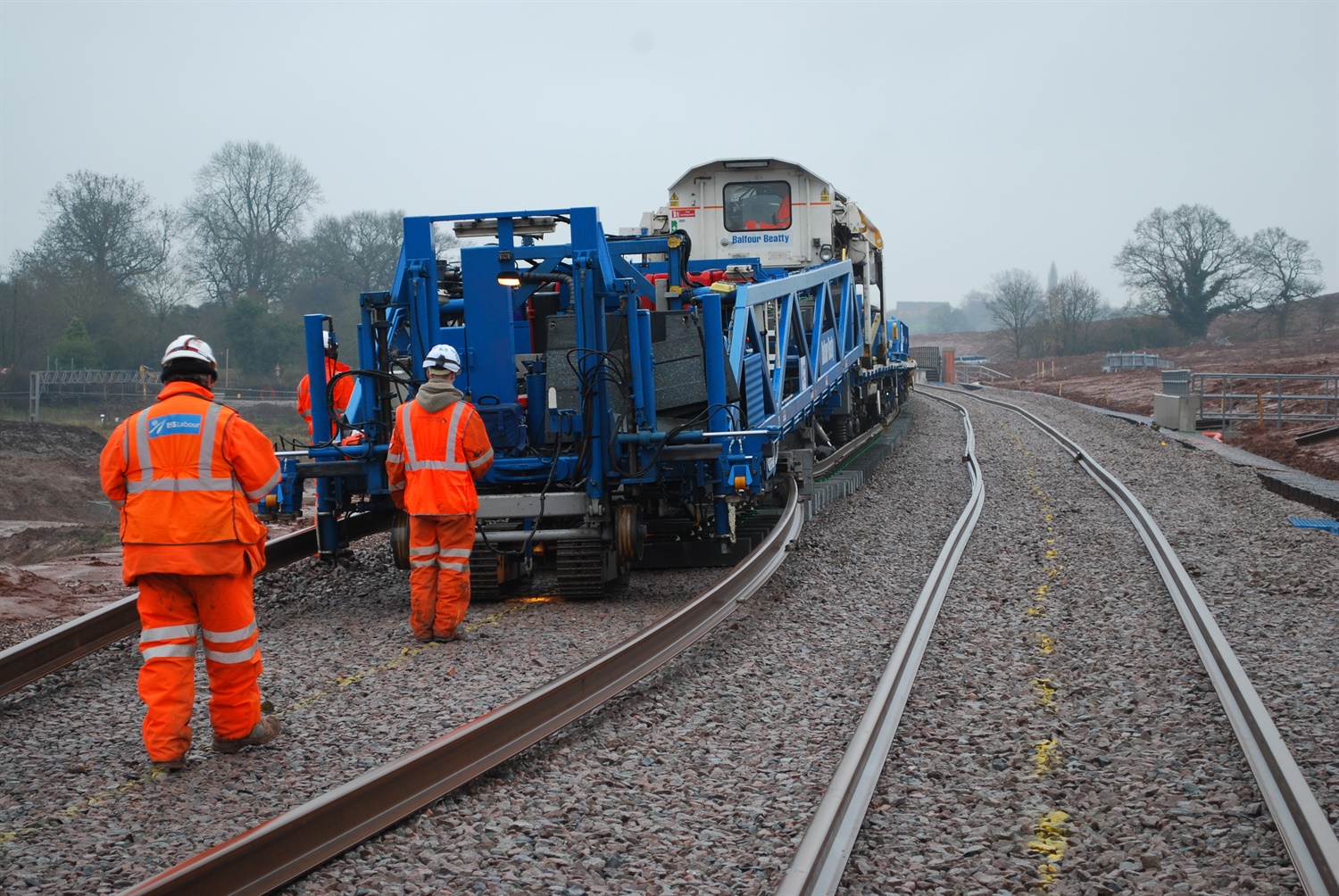18.12.15
Fast-tracking at Norton Bridge
Source: RTM Dec/Jan 16
Greg Salisbury, senior project manager for track and OLE on the Staffordshire Alliance, talks to RTM about the project’s new track-laying record.
Work on the £250m Stafford Area Improvements Programme (SAIP) is entering its final stages this year, with the Norton Bridge flyover due to open over the West Coast Main Line (WCML) at Easter.
RTM caught up with the Staffordshire Alliance – a partnership of Atkins, Laing O’Rourke, Network Rail and VolkerRail – in late 2015, after its team set a new track-laying record on the project.
When we spoke to Greg Salisbury, senior project manager for track and OLE, the team had completed the construction of all structures on the build. That includes 10 new bridge structures and one bridge enhancement. Only Bridge No.8 has some remedial work left to be done over Easter. The project has also involved the laying of six miles of new track and a 1.2km section of road.
Before Christmas, the Alliance had substantially completed the earthworks. About a million tonnes of earth was excavated from a cutting for the new line, which is being used to create embankments and bunds.
In May 2015 track laying commenced from a new junction at Little Bridgeford, with this temporary railhead allowing the delivery of materials from Bescot yard.
“This has meant that approximately 90% of all aggregate and materials have been brought in by the actual rail corridor. In order to do that we have used about 120 trains,” said Salisbury.
“We’ve also delivered in the region of 40,000t of ballast, 30,000t of capping and about 20,000t of pipe bedding. That’s what we’ve been doing over the last four to five months.”
Flyover
The flyover will replace an existing flat-bed junction so that trains no longer have to wait at Norton Bridge, which will remove a major bottleneck on Britain’s busiest passenger and freight railway, the WCML.
The concept is that the Up and Down slow lines will leave the existing WCML route at Little Bridgeford Junction, climbing to the north. Making use of the height gain, the twin-track diverges and runs to the west of the WCML to a new junction at Searchlight Lane where a single track forks off to reconnect to the WCML north of Norton Bridge at Heamies Bridge. The twin track section then turns north to cross over the WCML on a new intersection bridge before re-joining the existing Stone Line at Yarnfield Junction.

Track installation
The Alliance has completed the installation of track and ballast in three phases, supported by the use of the Balfour Beatty Plant’s High Output New Track Construction (NTC) machine, which is up to 50% faster than conventional track-laying methods. Over the weekend of 12-13 December, the team utilised two NTCs to ensure the new track was in place. This was a UK first for the rail sector, noted Salisbury. “They had never used two NTCs on the same job in parallel,” he said. “We had one on the Up at Norton Bridge, the other was on the Down, literally working alongside each other. There was about a 200m difference between the front of one and the front of the other.”
The previous record for track-laying in a 48-hour period was 3,932m, set by Network Rail High Output, but the Alliance achieved 4,017m of uncommissioned track. They hit a peak production output of 375m/hr.
However, it wasn’t all plain sailing. A total of 3,950m worth of sleepers came in on the NTC trains, which was 105m less than planned due to a red-carded wagon, which was to carry 162 sleepers. But this was offset with sleepers the Alliance team had on site that were installed as a loose lay for 67m on the Down NBS.

No more than 20 people were on site during the track-laying feat, which saw the NTCs transporting new sleepers from trailing wagons and placing them onto a conveyor system that moved them to the head of the train before they were placed onto the track bed. Once the sleepers had been aligned to the correct spacing automatically, the new rail was run through a series of rollers/clamps and clipped.
Next steps
Salisbury noted that all the track work will be substantially complete in January, and then the OLE team has an installation programme for all the wire.
“That then leaves the signalling team to install the track furniture, such as the axle counters and cabinets, which takes them through to the Easter commissioning,” he said. “With regards to track, we have the sections that lead to the tie-ins on the WCML at the northern end and we have a tie-in at Yarnfield, which we need to get to, and then we need to tie-in in the south end of the WCML.”
He added that on the Tuesday after the Easter weekend, trains will be running along the new Norton Bridge lines.
Lessons learned
Asked what lessons he’d take away from this project, Salisbury said: “It is all about knowing what is required to deliver a new track in the greenfield. It is not often done. There are challenges. By being in a greenfield [site] you are not linked to a railway line, as such, which brings with it logistics challenges.
“Lessons I’d take from this going into other greenfield projects would be that if you can feed yourself by a railway line it does help significantly, both how you can bring aggregate to the site and also keeping your carbon footprint down and the locals happy.”
Discussing the pure construction alliance model adopted for the project, which is based around one unified agreement where all parties share the benefits and the risks, Salisbury added that it has made work much easier.
“We have not had the best of summers in terms of weather. It has been quite wet. There have been enormous challenges logistically,” he said.
“We had an aggressive earthworks programme, an aggressive drainage programme and – following right behind that – we were installing the capping and the ballast to enable the track to be put down. There was an awful lot of integration required between the civils and the track programme.”
Approximately 16km of track drainage has been constructed during the project, with six teams working concurrently across the piece at its peak.
“To enable that work to happen we had daily meetings looking at the logistics,” he said. “The programme dates never changed. We had an end point, which was the new NTCs coming in, and each of those were used as a milestone in the project which was an immovable point in time.
“We had to hit that by hook or by crook. So, we accelerated when we needed to accelerate – whether that required extra resources or not – and managed to introduce parallel working where we could do. It was all about integration.”
Metres breakdown
Down Slow (224.057 to 224.758) = 701m
Down NBS (223.424 to 225.200) = 1776m
Up NBS (223.660 to 225.200) = 1540m
Tell us what you think – have your say below or email [email protected]